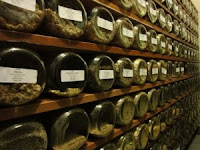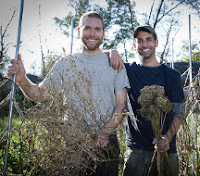Yesterday, as the temperatures dropped to true winter
levels, my mind searched for an antidote to the winter chill: planning spring
planting. While sitting
in front of the crackling fireplace, I organized and cleaned out last
season's seed box to see which seeds need to be added or
replaced—either because I used up last year's supply; was unhappy
with the results; or wanted to add more variety to my garden.
I also joined the Seed Library of Hudson Valley for the first time. They are attempting to re-establish a regional seed supply; they strive to:
~ create
an accessible and affordable source of regionally-adapted seeds that
is maintained by a community of caring farmers and gardeners
~ create
gift-quality seed packs featuring original works designed by artists in
order to celebrate the beauty and diversity of heirloom gardening
~ help
farmers, gardeners, and eaters understand where seeds come from, how
they are grown, who grows them, and why seed saving is more
important than ever.
It's
hard to resist this valuable local resource, especially since
purchasing seeds that have been successfully grown locally: supports
local farmers, ensures more crop success, and requires less “travel
miles” to reach my home. Annual membership is $25 (plus shipping),
and includes ten
free seed packs.
Members are encouraged to save seeds each season to return to the
library. A credit toward the following year's membership fee is
offered to those who return seeds. It is an easy agreement to
make: try ten locally grown seed varieties with no obligation to
return the seeds.
I
will, however, consider returning the seeds—like books to a library—for the next interested gardener. Saving seeds from the
productive plants in my garden is something I have experimented with
over the years, especially with annual flowers. The support that Ken
Greene and Doug Muller (the gardeners behind the library project)
offer via twitter, facebook , e-journal, and hands-on-workshops will
be helpful as I attempt to preserve more vegetable seeds in the
future. Their “Seed Starting 101” post offers information on local growing schedules, protected seed
starting, using cold frames, sowing practices, direct sowing, and
transplanting. So, hopefully, as the temperatures begin to drop next
Autumn, I'll be returning seeds to the library, to warm another
local gardener's heart on a chilly January day in 2013.



